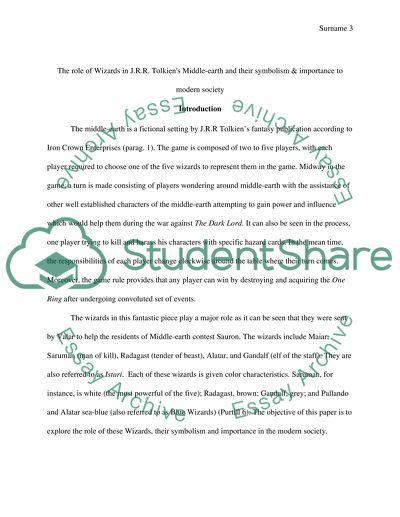Cite this document
(“The role of Wizards in J.R.R. Tolkien's Middle-earth and their Term Paper”, n.d.)
The role of Wizards in J.R.R. Tolkien's Middle-earth and their Term Paper. Retrieved from https://studentshare.org/literature/1400953-the-role-of-wizards-in-jrr-tolkiens-middle-earth-and-their-symbolism-importance-to-modern-society
The role of Wizards in J.R.R. Tolkien's Middle-earth and their Term Paper. Retrieved from https://studentshare.org/literature/1400953-the-role-of-wizards-in-jrr-tolkiens-middle-earth-and-their-symbolism-importance-to-modern-society
(The Role of Wizards in J.R.R. Tolkien'S Middle-Earth and Their Term Paper)
The Role of Wizards in J.R.R. Tolkien'S Middle-Earth and Their Term Paper. https://studentshare.org/literature/1400953-the-role-of-wizards-in-jrr-tolkiens-middle-earth-and-their-symbolism-importance-to-modern-society.
The Role of Wizards in J.R.R. Tolkien'S Middle-Earth and Their Term Paper. https://studentshare.org/literature/1400953-the-role-of-wizards-in-jrr-tolkiens-middle-earth-and-their-symbolism-importance-to-modern-society.
“The Role of Wizards in J.R.R. Tolkien'S Middle-Earth and Their Term Paper”, n.d. https://studentshare.org/literature/1400953-the-role-of-wizards-in-jrr-tolkiens-middle-earth-and-their-symbolism-importance-to-modern-society.


